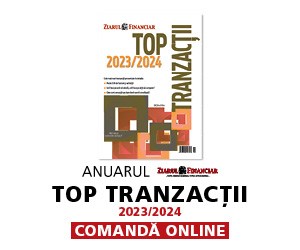Medium and long-term foreign debt went up by 8.1 billion euros last year to 36.8 billion euros. This is double the 4 billion-euro increase registered in 2006 and was largely fuelled by the 50% surge in foreign private debt, National Bank of Romania data reveals.
Medium and long-term foreign debt has doubled in the last three years from 18.3 billion euros at the end of 2004 to 36.7 billion euros at the end of 2007. State debt remained the same (around 10 billion euros) during this period, while the private component was the decisive contribution to the increase in the foreign debt.
"The increase in foreign debt is largely explained by the need to finance the current account deficit and the loans exported by domestic banks to their parent banks," says Ciprian Dascalu, a Millennium Bank trader. The current account deficit (that is the net foreign currency outflows) was mainly covered by debt, which replaced foreign direct investment (FDI). Only 42% of foreign deficit was covered by FDI last year, compared with 91% in 2006. The difference was covered by foreign debt. Foreign deficit stood at almost 16.9 billion euros (some 14.3% of GDP) last year, up 66% on 2006 (when it stood at 10.3% of GDP).
According to Dascalu, the second explanation for the increase in private debt is that loan exports to parent banks is a phenomenon that has increased over the past two years. "During the past two years, this phenomenon accounted for a large part of the increase in foreign private debt. It is hard to estimate the volume of loans exported, because we do not have any official figures, but I believe it was high," Millennium's trader explains.
Foreign private debt has increased five times over the last five years, while the state component of this debt only went up by 13%, to around 10 billion euros.
The biggest problem associated with the increase in foreign debt is the increase in costs, given the international credit crunch. "The international credit crunch raises foreign loan costs, which also applies to banks. More and more local banks have been applying a very aggressive strategy in terms of savings products lately, which shows they prefer resources that can be raised from the domestic market, instead of increasingly expensive funding from parent banks," Dascalu says. As far as companies borrowing from abroad are concerned, the debt increase also comes with an additional foreign exchange risk, as their exposure increases. The depreciation of the RON over the last six or seven months has put pressure on the increase of foreign funding costs, yet Millennium's trader says that the tests run by the National Bank do not show any reasons for concern about a potential foreign exchange crisis as a result of the increase in debt, amid sharp depreciation.
Another factor that makes borrowing abroad more expensive, besides the international credit crunch and the depreciation of the RON against the euro, is the downgrade of Romania's rating outlook by financial rating agencies. Earlier this year, Fitch lowered Romania's rating outlook from "stable" to "negative", after Standard & Poor's also lowered it twice last year from "positive" to "stable" and later to "negative".
Pentru alte știri, analize, articole și informații din business în timp real urmărește Ziarul Financiar pe WhatsApp Channels














































